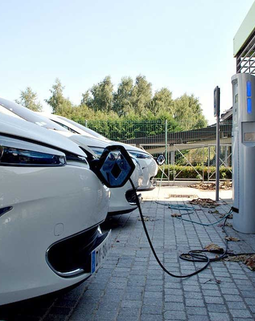Georgia's automotive sector, while not engaged in domestic vehicle production, plays a vital role in the regional market through vehicle importation and distribution, primarily from China. Characterized by a few dominant brands and a robust network of dealerships, the industry provides a comprehensive range of automotive services to meet diverse consumer needs.
Importation and Market Composition
The Georgian automotive market relies heavily on imports, with vehicles predominantly sourced from China. The absence of local manufacturing has led to a market shaped by five to six major players, acting as official dealers. These entities offer a variety of vehicles tailored to Georgian consumers, ensuring access to both economy and premium segments.
Comprehensive Automotive Services
Dealerships in Georgia extend their offerings beyond sales, delivering a wide array of automotive services to corporate and retail clients alike. These include:
- Diagnostics and Repairs: Services for light and heavy vehicles, buses, construction machinery, and specialized equipment.
- Use of Authorized Tools: Maintenance and repairs are conducted using official programs and specialized tools to ensure high-quality service.
This comprehensive approach contributes to customer satisfaction, vehicle reliability, and extended lifespan.
Leading Industry Players
One standout company has shaped Georgia’s automotive landscape over the past two decades, emerging as a regional leader. Key highlights include:
- Expansive Network: Approximately 24 branches throughout Georgia.
- Large Customer Base: Over 250,000 registered retail clients and 34,000 corporate clients.
- Significant Workforce: Employing more than 1,500 individuals.
- Regional Impact: Operates seven subsidiary companies and has evolved into a holding company with strategic partnerships.
This company’s success exemplifies the growth potential within Georgia's automotive industry.
Market Entry and Investment Opportunities
For businesses eyeing Georgia’s automotive market, understanding its import-dependent structure is essential. Opportunities include:
- Vehicle Imports: Establishing distribution channels for foreign manufacturers and suppliers.
- Service Infrastructure: Investing in service centers and advanced repair facilities to meet growing demand.
- Partnerships: Collaborating with established local players to navigate market dynamics and accelerate entry.
Conclusion
Georgia’s automotive industry, driven by imports and a comprehensive service network, offers significant growth and investment opportunities. Established companies with extensive networks and large customer bases highlight the market’s resilience and potential. As the sector evolves, stakeholders have the chance to introduce innovative products and services, fostering advancement within the industry and contributing to Georgia’s economic development.





